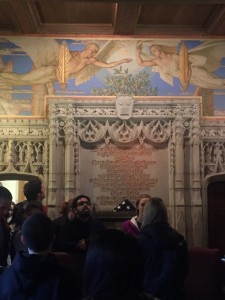I thought the Becker-Rose Cafe this past Wednesday was very interesting. I could only stay for about half the time, but I’m glad I did because I feel like I learned a lot from what Professor Sloan had to say. Strangely enough, though, the thing that resonated with me the most about what Professor Sloan shared about Galileo wasn’t particularly related to astrology or theology at all. In fact, it had to do with sheer resilience and sticking with something one believes in. Obviously a very intelligent man, Galileo tried something that others hadn’t ever thought to try before: “taking a telescope and looking up,” as the professor put it. By doing so, this 17th-century man made the discovery that the Earth was indeed round and wasn’t the center of the universe after all, thus challenging everything people of his time believed in. This fact that Galileo didn’t let what others thought of him snuff out his beliefs was the thing that stuck out the most to me. He had an idea, he supported it, and he ran with it, which I think is a lesson that can be applied to anyone, especially people at a place like Cornell.
And, for the record, I did learn some pretty cool facts about space that I hadn’t previously known, such as the fact that Venus is never more than 47 degrees away from the sun and that retrograde movement of the planets is just a matter of perspective. I really enjoyed this cafe, and I’m glad I could get a life lesson out of it, too!

